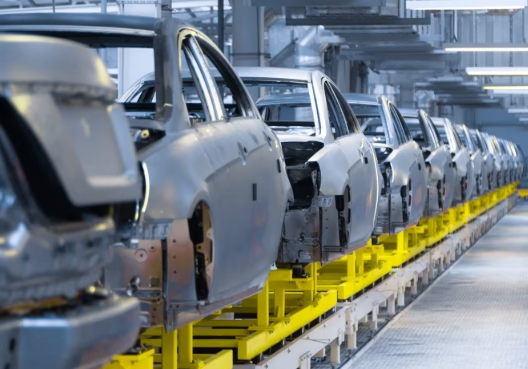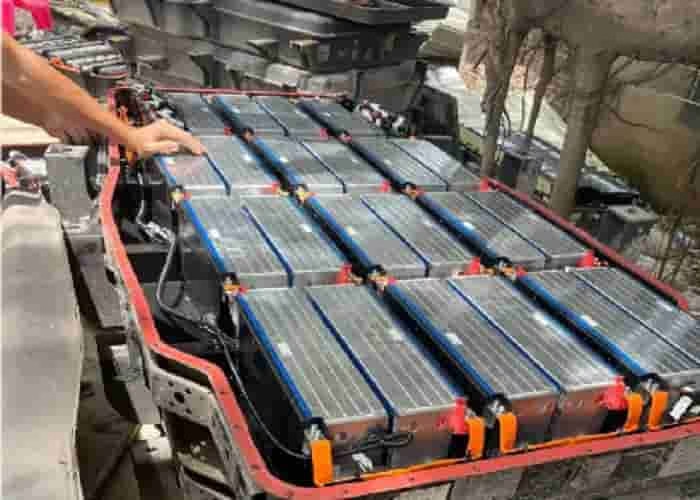With the serious air pollution in Thailand in recent years, we gradually discovered that among the Japanese cars that once dominated the streets of Thailand, Chinese new energy vehicle brands have gradually emerged. How is the situation of Chinese car companies entering Southeast Asia? Which brands have taken the lead in suppressing Japanese car companies in Thailand? In Thailand’s anti-Japanese war, Chinese new energy vehicle companies are killing like crazy?
1. The outbreak of the price civil war
June to August each year, compared with the annual sales share, is basically the off-season for vehicle sales. In fact, almost all car companies will more or less deploy some promotional means and policies in these months. However, in order to maintain long-term development, the brand’s discount policy will not deviate too much from the price curve, fearing that it will disrupt market pricing and cause backlash to the brand image.
Until the end of May this year, BYD opened the poster of the half-cut, and the price war was immediately in full swing.
I wrote about this content before, but from the feedback in the comment area, I personally think that the audience can only see the basic phenomenon of price adjustment, and do not know much about the macroeconomic level reflected behind it.
Consumption with real estate as the pillar industry has become a thing of the past. The new energy industry chain and related consumption have carried the expectations of my country’s economic consumption in the past period of time. The price war between new energy automobile companies is tantamount to stripping the underwear of national consumption. This is why the price war was immediately criticized and rectified by the state as soon as the prelude was opened.
No egg is left unbroken under the overturned nest. Those who have received nine years of compulsory education know that the three major drivers of the economy are investment, consumption and exports. With sluggish investment and tight consumption, is export a way out for Chinese new energy automobile companies?
2. It seems to be an opportunity
Thailand is an inevitable link for many companies doing business overseas, especially in the ASEAN market.
In April 2025, Bangkok, known as the Detroit of the East, ushered in the largest international auto show in Southeast Asia. At this year’s Bangkok International Auto Show, it can be said to be a watershed for Chinese new energy companies.
According to Thai media, the sales volume of new cars at this auto show was 79,941, almost the same as in 2024. Among them, BYD, a Chinese auto brand, reached 9,819 units, surpassing Toyota, which has always dominated the Thai market. If the 534 orders of Denza are added, the total number of 10,353 units is far ahead of Toyota, which has been deeply rooted in Thailand for decades, accounting for 13.3% of the sales volume of the entire auto show, and won the sales champion of this auto show.
From the screenshot of sales data, brands such as GAC, Changan, Great Wall, Chery, Xiaopeng, Nezha, Geely, and Zeekr also performed well. It is obvious that the rise of Chinese brands has become the biggest highlight of this year’s Bangkok Auto Show.
Fuel vehicles have never been the long board of Chinese auto companies. The new power brands are the ones that can really become popular in the Thai market. In this auto show, a total of 41 auto brands participated in the exhibition, of which 16 were Chinese new energy vehicle brands, accounting for about 40%. Among them, BYD directly took the most core position in the entire exhibition hall, and its booth area even exceeded that of Toyota.
The small screen of Japanese cars and the unchanged plastic interior for more than ten or twenty years have basically caused aesthetic fatigue in Thailand. The air-conditioning, color TV and large sofa, which are popular among Chinese people, are a perfect dimensionality reduction attack against Japanese cars, and have also won a lot of praise in tropical Thailand. In the past few years, the streets of Bangkok were crowded with Toyota, Honda and Suzuki, but now you can also see a lot of BYD, Nezha and Aion.
At Suvarnabhumi and Don Muang Airports, huge advertisements of BYD and Aion can be seen everywhere, and on the way to the iconsiam business district, the street flags are also occupied by Chinese new energy vehicle companies such as Xiaopeng.
Whether it is domestic or international development, new energy vehicles cannot be separated from government subsidy policies. In Thailand, the new energy subsidy policy implemented from June 2022 shows that the consumption tax on new energy vehicles will be reduced from 8% to 2%, and pure electric vehicles with a market price of less than 2 million baht (RMB 430,000) will be provided with a maximum subsidy of 150,000 baht (RMB 32,000) per vehicle, while the import tariff of the whole vehicle will be reduced to 40% at most.
3. It is challenging to do it
With the influx of Chinese new energy vehicle companies, Japanese car companies entrenched in the Southeast Asian market have been hit hard. In order to cope with the competition, in December 2024, Toyota Motor Chairman Akio Toyoda announced that he would invest 55 billion baht (about US$1.6 billion) in Thailand to expand the production of hybrid vehicles to consolidate his dominant position.
But at the same time, new energy companies entering the Thai market are not as comfortable as imagined. According to the EV3.0 policy issued by Thailand in 2022, new energy vehicle companies that receive subsidies must deploy electric vehicle production capacity in Thailand. For example, the same number of vehicles as the import volume of complete vehicles in 2022-2023 must be produced in Thailand in 2024.
For example, if 100 complete vehicles are imported from China in 2023, 100 vehicles must be produced in Thailand in 2024. If the 100 vehicles are not completed in 2024 and only 80 are produced, the remaining 20 can be postponed to 2025, but the corresponding penalty is to complete 1.5 times the number, that is, to increase to 30.
Then someone will definitely say, it’s simple, just set up a factory in Thailand, anyway, Thai labor is cheap.
But in fact, Thailand’s upstream and downstream industrial chain layout related to the new energy industry is not perfect. If the corresponding raw materials are exported from China, shipping logistics, packaging, warehousing, etc. are all considerable expenses;
At the same time, although the cost of Thai workers is cheap, it is not a little bit worse than that of mature Chinese workers. The labor is cheap, but the output quality and efficiency are much worse than that of the domestic ones. For example, you want to double or triple the salary for workers to work overtime, but they think that accompanying their families is more important.
Another is the travel, subsidy, accommodation and other expenses of senior managers sent from home and abroad. The actual labor cost of a person in the same position is about 20% higher than that in China.
In addition, in terms of supply chain system integration, Japanese brands that have been entrenched in Thailand for nearly half a century have already participated in mutual shares with many local core supply chains. The entry of Chinese auto brands cannot get relevant resources at all. The construction of the system and the reorganization of resources require more time and money.
Therefore, the cost of producing a car in Thailand may be more than 20% higher than that in China.
4. The stock market is already a red ocean
On April 1 this year, the Prime Minister of Thailand met with Wang Chengjie, general manager of Hongqi Overseas Company. In fact, after SAIC entered the Thai market in 2014 and Great Wall Motors in 2020, many Chinese new energy vehicle brands have also flocked to the market in the past three years. BYD, Nezha, and GAC have all been put into production, and Changan and Chery will also be completed and put into production in 2025.
Since Thailand does not have a mandatory scrapping policy, the Thai automobile industry has actually been in a stock market state.
In 2024, Thailand’s annual automobile sales will be 600,000 units, and the Chinese new energy automobile companies that have been completed and put into production in Thailand are expected to reach 500,000 units in 2025, and BYD alone can complete the production scale of 150,000 units.
But fortunately, the low tariff policy between ASEAN countries, new energy vehicles produced in Thailand, with a good export strategy, can be sold to Vietnam, Malaysia, Indonesia and other places at the same time.
When Alpha was sold in China, those who could afford it or not were a little indignant: Why does this garbage thing only sell for a few dollars in Japan? Why do they dare to transform into million-dollar luxury cars in China?
Do you think that our cars can also enjoy a wave of price difference bonuses when they go abroad?
In fact, many car companies are still playing domestic routines and engaging in price wars abroad even after going overseas.
For example, BYD was directly complained to the Consumer Protection Association by Thai users in July 2024 because of the excessive price reduction. Some users who bought cars with loans even directly mortgaged their cars and returned them to the bank and refused to repay the loans, which forced the Thai Prime Minister to come forward to talk to Wang Chuanfu and demand the protection of consumer rights.
















Leave a Reply